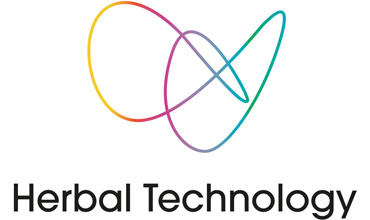Standardization of Herbal Medicine and Enforcement of Regulations in Herbal Medical System

Abstract:
Ever since the birth of mankind there has been a relationship between life, disease, nature and herbal medicinal plants. Primitive medicine men started studying diseases and treatments through the use of nature around him. Through their intuition and by regular practice of trial and error methods, they identified and evolved a system of medical knowledge on herbal remedies. The history of herbal medicine is as old as human history.
In recent decades, there are malpractices, by some unethical herbal practitioners and herbal drug manufactures, which are injurious and at times fatal to the people. Hence the need for standardization of herbal medicine and enforcement of regulations for the same, are indispensable. This Article strives to analyze various measures of standardization, regulations and actions against malpractices in Herbal Medical System to safeguard the welfare of the people.
Keywords: Herbal Medical Systems, Standardization, Regulations, People’s welfare.
References:
[1]. Abhishek, K; Ashutosh, M and Sinha, BN (2006), “Herbal drugs- present status and efforts to promote and regulate cultivation”, The Pharma Review, 6, 73-77.
[2]. Abhishek, K; Ashutosh, M and Sinha, BN, “Herbal drugs- present status and efforts to promote and regulate cultivation”, Pharma Review, 2006 6, 73-77.
[3]. Bodhisattwa Maiti et al., “Recent Trends in Herbal Drugs: A Review”, International Journal of Drug Research and Technology, 2011,Vol.1 (1),17-25
[4]. British Pharmacopoeia, Vol. IV, Appendix XVI B, A356–A363 (2005).
[5]. Good Manufacturing Practices for pharmaceutical products, In: WHO Expert Committee on Specifications for Pharmaceutical Preparations. Thirty-second report. Geneva, World Health Organization, 1992:14-59 (WHO Technical Report Series, No. 823).
[6]. H. Wagner, et al, “Handbook of Medicinal Plants”, Chapter 21, Haworth Medical Press, Binghamton (2001).
[7]. Harish, P (2001), “Herbal drugs”, Current Science, 81(1), 15
[8]. M.Mosihuzzaman and M. Iqbal Choudhary, “Protocols On Safety, Efficacy, Standardization, And Documentation Of Herbal Medicine”, Pure Applied. Chemistry, Vol. 80, No. 10, Pp. 2195–2230, 2008. Doi:10. (IUPAC Technical Report)
[9]. Page LR, “Whole Herbs or Standardized Plant Constituents?”, Total Health Journal, 2001,23(4):20.
[10]. Report by David R. and Walker, B, “Regulation of Herbal Medicines and Practitioners”, March 2015.
[11]. Romanian Pharmacopoeia X, Chap. IX, Ed, Medicala, Bucuresti (1993).
[12]. Satarupa Banerjee and Analava Mitra, “Changing Landscape of Herbal Medicine: Technology Attributing Renaissance”, International Journal of Pharmacy and Pharmaceutical Sciences, Vol.4,Supl.1, 2012
[13]. Sukhdev, S; Arun, N and Kalia, AN (2008), “Patentability of herbal products: A review”, The Pharma Review, 4,118-124.
[14]. The Madras Public Health Act 1939 & The Travancore-Cochin Public Health Act 1955.
[15]. Vardana Garg et al., “Facts about Standardization of Herbal Medicine: A Review”, Journal of Chinese Integrative Medicine, October 2012, Vol.10, No.10.
[16]. WHO technical report series, “Guidelines for the Assessment of Herbal Medicines”, 1996, 863, 178-184.
[17]. WHO Global Survey, “National Policy on Traditional Medicine and Regulation of Herbal Medicines”, World Health Organization Geneva, May 2005, 168 pages.
[18]. Willard T, “Edible and Medicinal Plants of the Rocky Mountains”, Calgary, Wild Rose College of Natural Healing,1996.
[19]. WHO guidelines on safety monitoring of herbal medicines in pharmacovigilance systems, World Health Organization, Geneva, 2004
[20]. Winslow, L; Kroll, DJ (1998), “Herbs as Medicines, Archives of Internal Medicine”, 158, 2192-2199.

